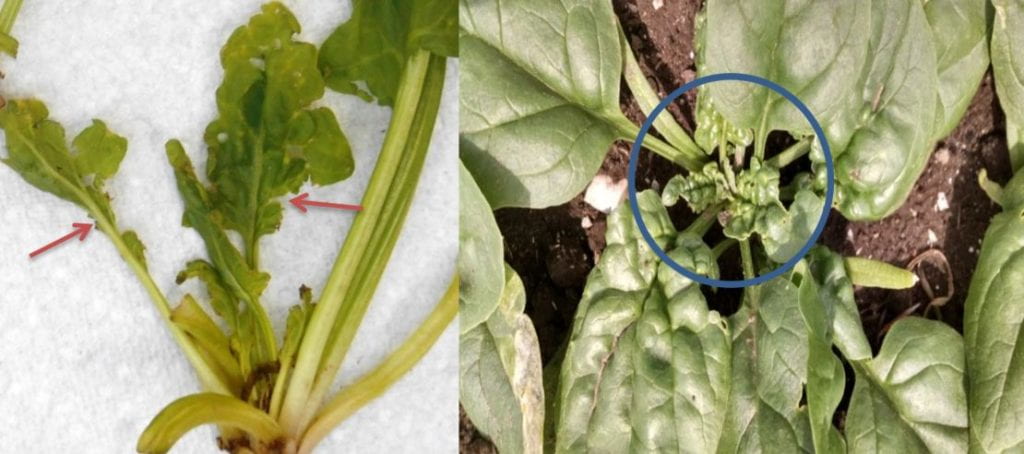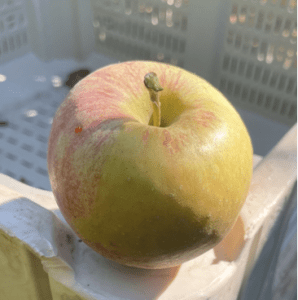Spinach Crown Mites in Spinach
by Jerry Brust, UME
Spinach crown mites Rhizoglyphus sp. feed within the folds of new leaves in the crown of spinach plants. This feeding causes the new leaves to become deformed as they grow (figs.1 and 2). Crown mite adults are extremely small bulbous nearly transparent mites that also may have a yellow-beige body color with reddish-brown legs (fig 3). A good characteristic to look for to identify these mites is the sparse long hairs mostly found on the back end of the mite (fig. 3). Crown mite eggs are spherical and clear and laid on the creased leaf surfaces in the crown area. Some reports state that crown mites can act as vectors for plant pathogens such as Pythium and Rhizoctonia, but this is not definitive.

The spinach crown mite is most damaging in soils high in organic matter and under cool moist conditions (weather conditions we have had this past week). Because these mites can consume organic matter they can survive in soils after the crop has been removed. This is one reason they are difficult to control as they can survive for fairly long periods of time with no crop being present. The other reason they are difficult to ‘control’ is we do not realize they are causing the problem until it is too late.

Most control recommendations include sanitation and crop rotations as being important as are fallow periods. Pyrethroids are a possible chemical control as is Neem; any chemical control has to get down into the crown of the plant to have any chance of working. There has been little research conducted on the most efficacious material for these mites. Mostly what is needed are warm sunny days where spinach can grow well and the environment is not so conducive to the mites.
